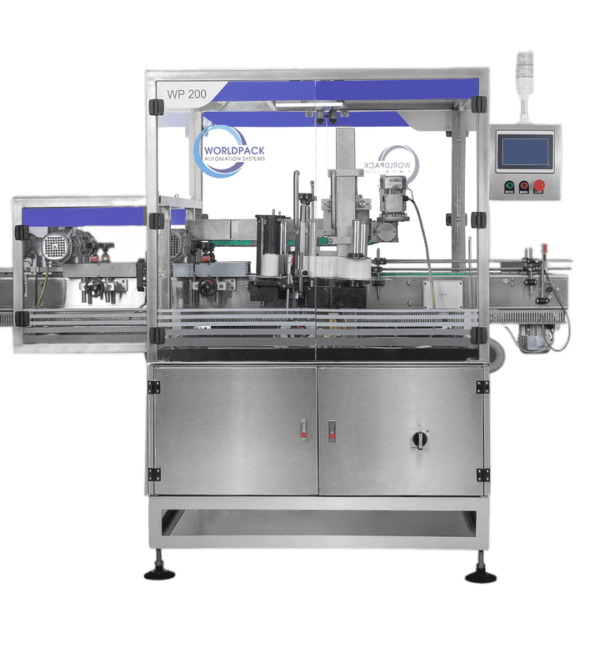Introduction:
Labeling machines play a crucial role in various industries, enabling efficient and accurate application of labels on products and packages. Whether it’s for branding, compliance, or traceability purposes, these machines offer a range of benefits that streamline the packaging process. In this comprehensive guide, we will delve into the different types of labeling machines, their uses across various industries, and the multitude of benefits they provide.
Types of Labelling Machines:
1. Manual Labelling Machines: Ideal for small-scale operations or low-volume production, manual labeling machines require operators to apply labels by hand. They are cost-effective and versatile, but limited in terms of speed and automation.
2. Semi-Automatic Labelling Machines: These machines combine manual and automated processes, where the operator feeds the product, and the machine applies the label automatically. Semi-automatic labelers offer increased efficiency and productivity compared to manual machines.
3. Automatic Labelling Machines: Designed for high-speed production lines, automatic labeling machines offer fully automated label applications. They can handle large volumes of products, ensuring precise label placement, and reducing labor costs.
Uses of Labelling Machines:
1. Product Packaging: Labelling machines are extensively used in industries such as food and beverage, pharmaceuticals, cosmetics, and consumer goods for product identification, branding, and regulatory compliance.
2. Barcoding and Tracking: Labelling machines facilitate the application of barcodes, QR codes, and other tracking labels, allowing businesses to efficiently track inventory, optimize supply chains, and streamline logistics.
3. Security and Tamper-evident Labels: Labelling machines are utilized to apply security labels, such as holographic or tamper-evident labels, ensuring product integrity and preventing counterfeiting or tampering.
Benefits of Labelling Machines:
1. Increased Efficiency: Labelling machines automate the labeling process, reducing human error and increasing production efficiency. They can apply labels at high speeds, keeping up with fast-paced manufacturing lines.
2. Accuracy and Consistency: Labelling machines ensure precise label placement, alignment, and orientation, resulting in consistent and professional-looking products. This enhances brand image and customer satisfaction.
3. Time and Cost Savings: Automating the labeling process reduces labor costs, improves productivity, and minimizes production downtime associated with manual label application. It enables businesses to focus resources on other critical tasks.
4. Compliance and Traceability: Labelling machines facilitate compliance with regulatory requirements by accurately applying labels containing vital information such as ingredients, expiration dates, and batch numbers. This ensures product safety and traceability throughout the supply chain.
5. Versatility and Adaptability: Labelling machines can handle various label sizes, shapes, and materials, offering flexibility for different product types and packaging formats. They can accommodate customization and meet changing market demands.
6. Maintenance and Calibration: To ensure optimal performance, labeling machines require regular maintenance and calibration. This involves cleaning the machine, inspecting components, and adjusting settings to maintain accuracy. Proper maintenance helps prevent breakdowns, extends the machine’s lifespan, and reduces the risk of label misplacement or damage during application.
7. Integration with Other Systems: Labelling machines can be integrated with other systems, such as barcode scanners, weighing scales, or vision systems. This integration allows for seamless data exchange, automated label printing based on product specifications, and real-time quality control. It enhances overall efficiency and reduces manual intervention in the labeling process.
8. Advanced Features and Technologies: The field of labeling machines has witnessed advancements in technology to meet evolving industry requirements. Some machines now offer features like automatic label verification, which uses optical sensors to ensure the correct label is applied and detects any printing errors. Additionally, advanced labeling machines may incorporate RFID (Radio Frequency Identification) technology, enabling improved inventory tracking and authentication.
9. Environmental Considerations: With growing awareness of environmental sustainability, labeling machines have adapted to address eco-friendly concerns. Some machines now use biodegradable or recyclable label materials, reducing the environmental impact of packaging. Furthermore, energy-efficient designs and reduced material waste contribute to sustainable manufacturing practices.
10. Customization and Branding: Labelling machines provide opportunities for customization and branding. They can handle various label designs, colors, and finishes, allowing businesses to showcase their brand identity and create visually appealing product packaging. Customized labels help products stand out on the shelf and enhance brand recognition.
Conclusion:
Labelling machines have become indispensable tools across industries, offering efficiency, accuracy, and versatility in product packaging. From manual to automatic systems, these machines streamline the labeling process, enhance compliance and traceability, and provide numerous benefits like cost savings and increased productivity. By understanding the types, uses, and benefits of labeling machines, businesses can make informed decisions when selecting and implementing these machines in their operations, ultimately improving overall efficiency and customer satisfaction.
